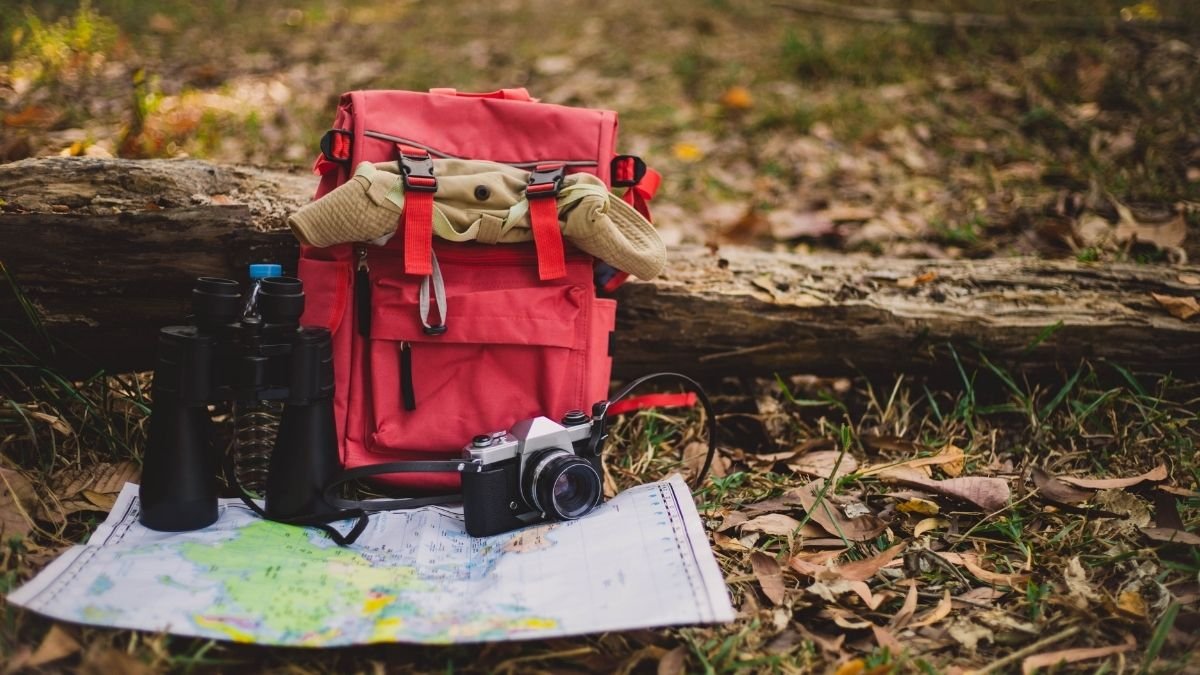The aisles of every outdoor store are a minefield of brilliant solutions to problems you don’t actually have. We have all felt that pull, seduced by the promise of a gadget that will bring flawless comfort to the backcountry.
The marketing is clever, painting a picture of effortless outdoor living with just one more specialized purchase. The reality hits you at the campsite: a heavier pack, a lighter wallet, and a pile of gear that complicates the simple act of being in nature.
This guide is your intervention. We are cutting through the noise to expose the most overhyped and underperforming camping items on the market. Get ready to save money, lighten your load, and embrace the smarter, field-tested alternatives.
1. The Complete, Nesting Cook Set
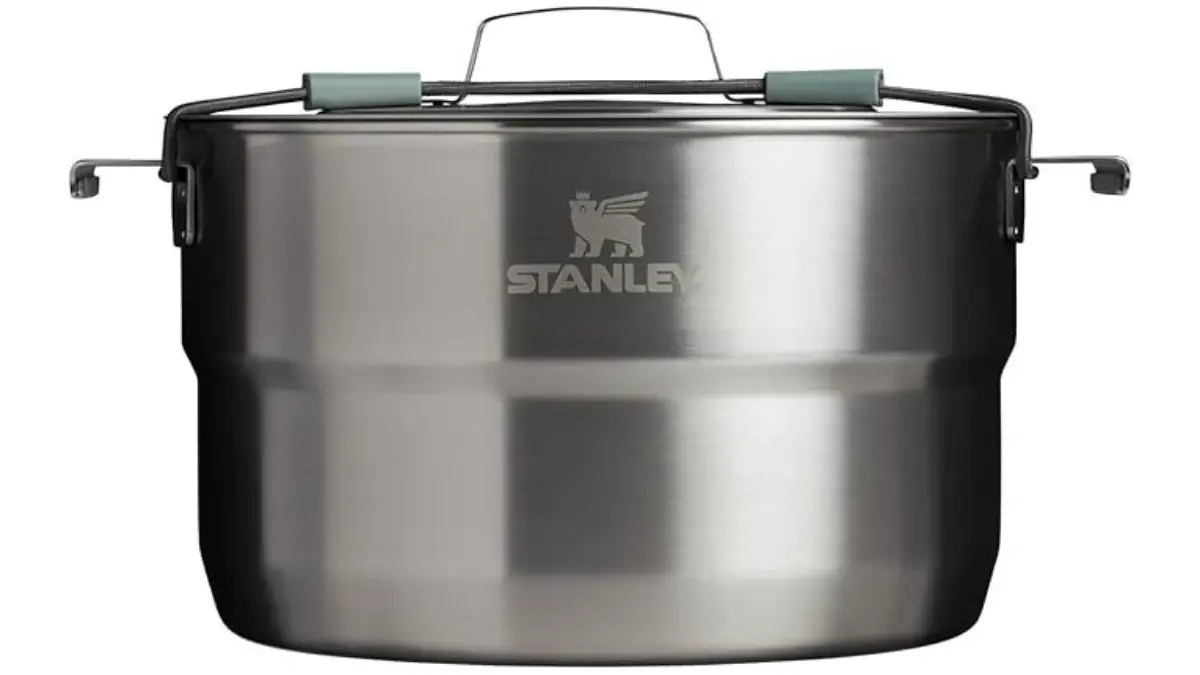
The Seductive Promise: These kits offer the dream of total organization and gourmet meals at the campsite. They present a perfectly contained, all-in-one solution that seems to cover every possible cooking need.
The Harsh Reality: In practice, these sets are often a bad investment. They are typically bulky, surprisingly heavy, and filled with tiny, single-function utensils you will rarely use.
A big problem noted by campers is that the cookware is often too small for real use, with one person complaining that a pan “can only fit 1 egg in it at a time”. You end up paying a premium for a collection of items you likely already own in a more useful size.
The Smarter Alternative: Put together a personalized cooking kit from items you already have. As one camper wisely suggests, “Bring a shitty pot from home to cook in”. Add a single, versatile cast iron skillet, which is tough and great for cooking over a fire.
A great strategy is to create a dedicated camp cooking tote by retiring older kitchen items, which also gives you an excuse to upgrade your home cookware. This method is cheaper and results in a kit made for your actual cooking style.
2. The Dedicated Camping Pillow
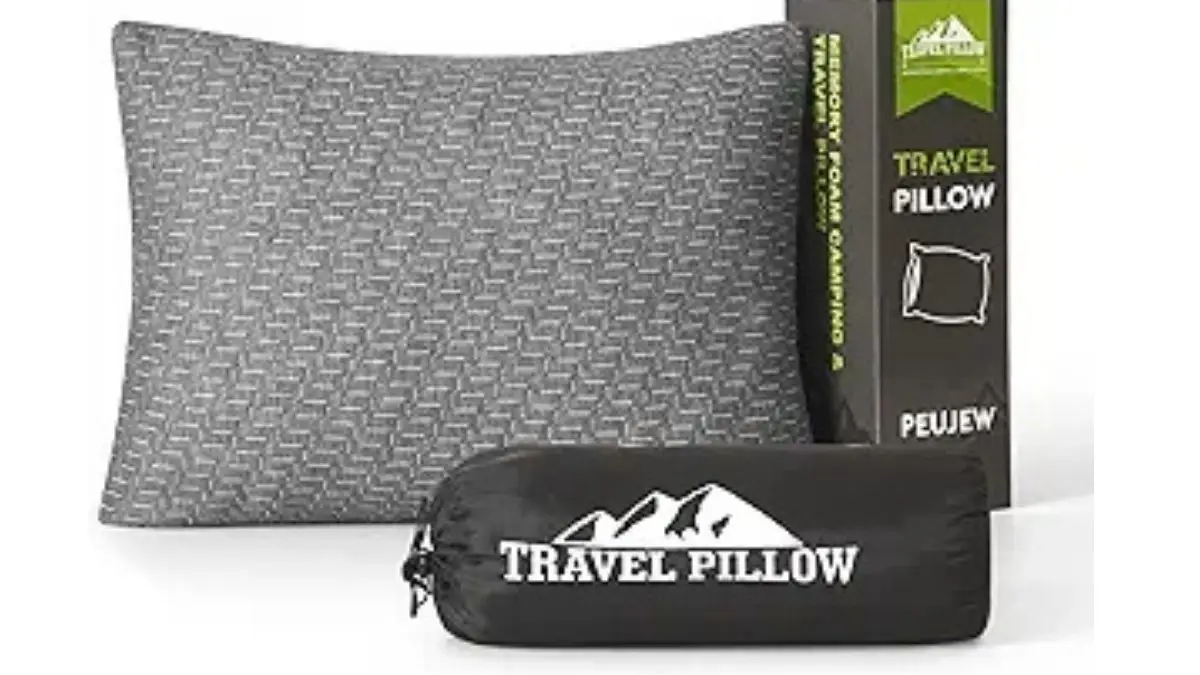
The Seductive Promise: The dedicated camping pillow promises the comfort of your home bedroom in a small, light package. It seems to solve the problem of getting a good night’s sleep in the wild.
The Harsh Reality: These special pillows, especially the inflatable ones, are often a source of frustration. They can be noisy, crinkly, and offer little support, leading to an uncomfortable night.
They are also known to leak slowly, leaving you with a flat, useless piece of plastic by morning. It’s another single-purpose item to pack and keep track of, with one analysis finding that a standard pillow from home is “WAY comfier than an inflatable one”.
The Smarter Alternative: The best and most cost-free option is the stuff sack method. Just fill your sleeping bag’s stuff sack or a spare dry bag with soft clothing, like a fleece jacket, to create a comfortable, adjustable pillow.
For a better feel, a camper on a forum suggests covering the clothes-filled sack with a simple cotton pillowcase.
This multi-purpose solution gets rid of an unnecessary item and uses gear you are already carrying.
3. The Oversized “Survival” Knife or Machete
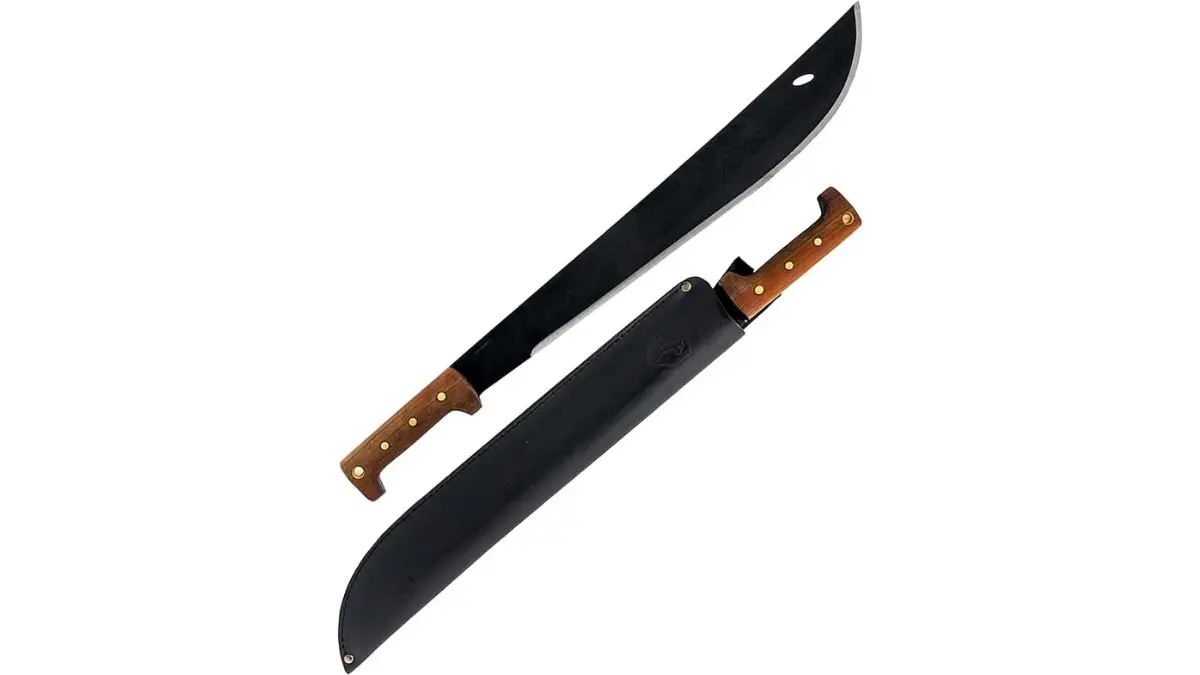
The Seductive Promise: Influenced by survival TV shows, many campers are drawn to large, intimidating knives or machetes. The promise is one of ultimate preparedness, suggesting you’ll be ready for any wilderness emergency.
The Harsh Reality: For 99% of camping trips, especially in established campgrounds, a huge “survival” knife is impractical, unnecessary, and potentially dangerous overkill.
Most campers are not cutting through dense jungle or building shelters from scratch. A large blade is clumsy for common camp tasks like cutting rope, preparing food, or making kindling. It’s often bought based on a fantasy of survival rather than a real need.
The Smarter Alternative: A more functional and safer approach uses two tools. First, a quality multi-tool can handle a wide range of repair and utility tasks.
Second, a simple, sturdy fixed-blade knife with a 3- to 4-inch blade is enough for almost all cutting needs. For processing firewood, a small folding saw or a compact hatchet is much more efficient and safer than a large knife.
4. The Backpack Rain Cover
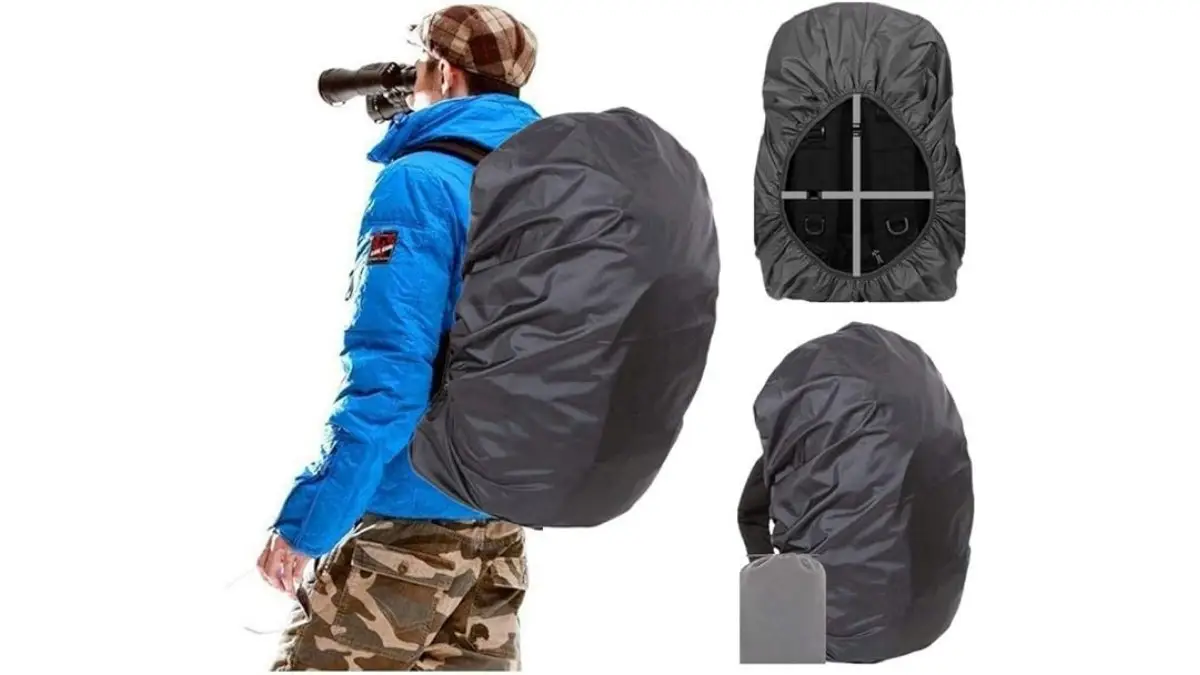
The Seductive Promise: A backpack rain cover seems like a logical, simple solution to a common problem: keeping your gear dry in a storm. It’s sold as a simple, waterproof shield for your expensive pack and its contents.
The Harsh Reality: Backpack covers are known to be ineffective. Their main design flaw is that they do not protect the back panel of the pack—the part that rests against your back.
Water always runs down your shoulders and back, seeping into the pack through the harness system and soaking everything from the inside. They can also act like a sail in high winds, becoming a problem on exposed trails.
The Smarter Alternative: The better and more reliable method is to protect your gear from the inside out. This means using a waterproof pack liner inside your backpack.
This creates a solid barrier around your most important items, like your sleeping bag and spare clothes. An ultralight and very durable Nylofume pack liner is a great choice, but a simple, cheap trash compactor bag is almost as effective and is trusted by experienced backpackers.
This internal system is foolproof, lighter, and cheaper than a dedicated cover.
5. The Small, Portable Solar Panel Charger
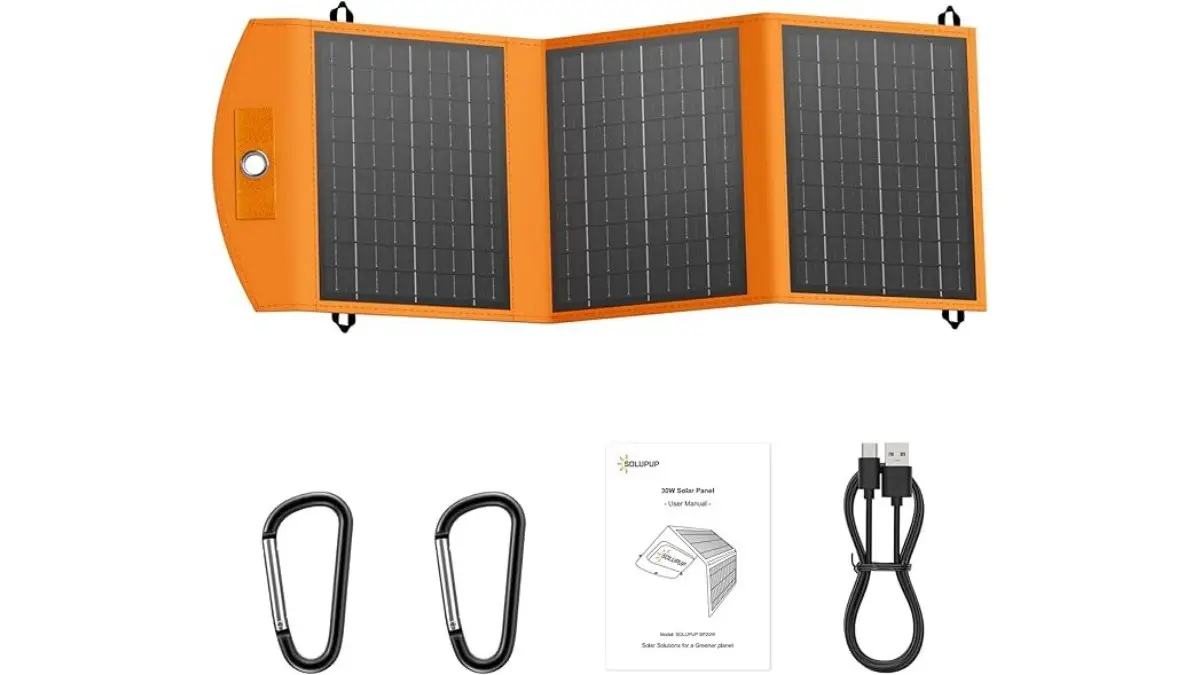
The Seductive Promise: These gadgets promise a future of endless, free, and green power. The idea of using the sun to keep your phone and other electronics charged while off-grid is a powerful and attractive concept.
The Harsh Reality: The performance of most small, packable solar panels is far from what they promise. They are often very inefficient and depend heavily on perfect weather—meaning direct, constant sunlight.
In the shade of a forest campsite or on a cloudy day, their output is almost zero. You can spend a whole day moving the panel to follow the sun, only to get a tiny charge on your device.
The Smarter Alternative: A high-capacity portable battery pack, or power bank, is a much more reliable and practical solution. When fully charged at home, a quality power bank can provide several full charges for a smartphone and other small devices.
It works instantly, no matter the weather, time of day, or where your campsite is. For car campers, a simple 12V car charger is an even easier and more effective option.
6. The Dedicated Hand-Crank Blender or Camp Toaster
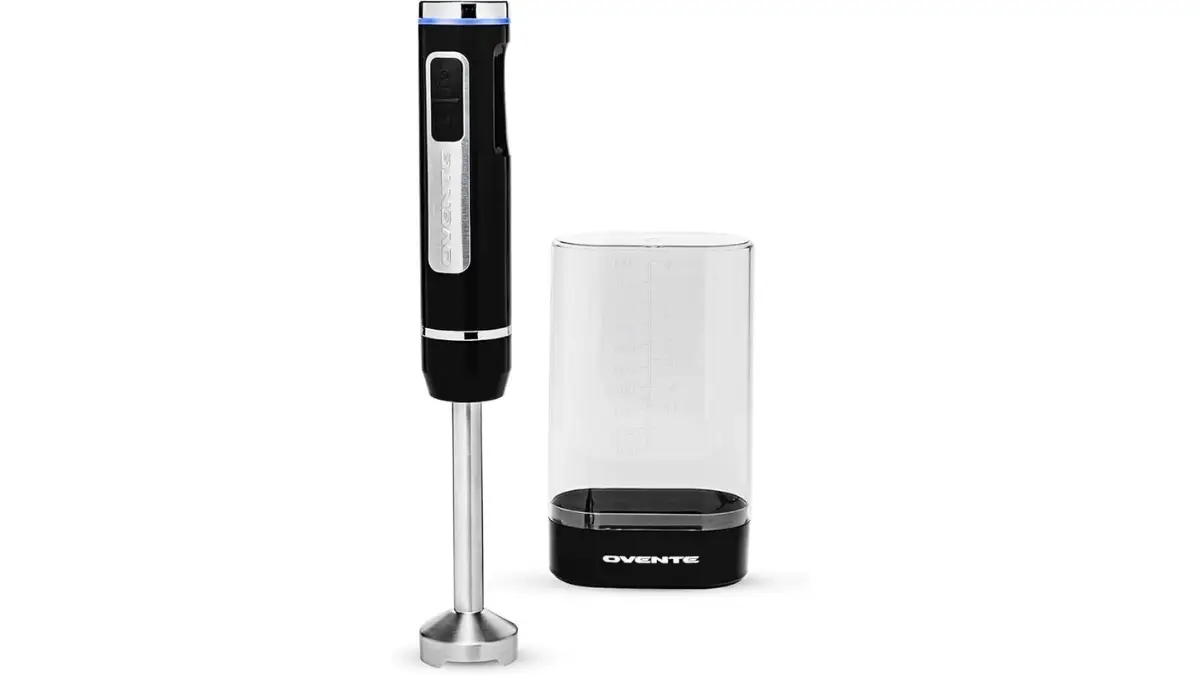
The Seductive Promise: These items appeal to our desire to have home comforts in the outdoors. The ability to make a morning smoothie or enjoy a perfectly browned piece of toast seems like a small luxury that would make camping better.
The Harsh Reality: These gadgets are the definition of gimmicky, single-use items that add weight, bulk, and complexity for very little reward.
They are often made of flimsy plastic, are hard to clean properly at a campsite, and go against the idea of simplifying your routine in nature. As one review humorously notes, the idea that one “cannot go camping without a piece of toast” is absurd.
The Smarter Alternative: Embrace the simplicity of camp cooking. You can easily toast bread on a grill grate over campfire coals or in a skillet. Instead of complex blended drinks, enjoy cowboy coffee or tea.
The goal of camping should be to adapt to the environment, not to bring a fully equipped kitchen with you. A single skillet can be used to cook a wide variety of meals, making it a much more valuable and versatile tool.
7. The Single-Use “Mystical Fire” Color Packets
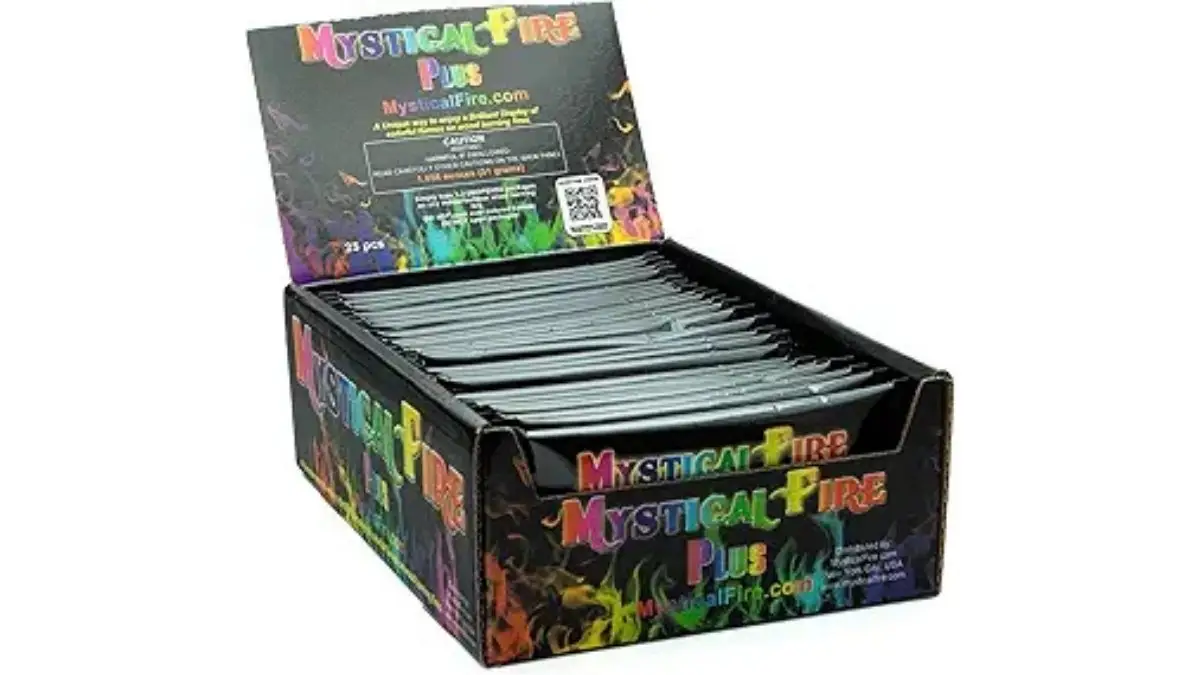
The Seductive Promise: For a small price, these packets offer to turn a normal campfire into a mesmerizing show of vibrant, colorful flames, adding a touch of magic to the evening.
The Harsh Reality: This product is basically a packet of chemicals you throw into a fire. A key warning on the package says not to cook food over the chemically treated flames, which limits the fire’s main use for cooking or roasting marshmallows.
It is a short-lived novelty that puts unnecessary chemicals into the environment and takes away from the natural beauty of a real wood fire.
The Smarter Alternative: Invest time in learning basic fire-building skills to create a beautiful, efficient, and healthy fire.
The natural dance of real flames provides more than enough atmosphere. For extra light, use a lantern with a dim, red-light setting, which helps preserve your night vision for stargazing and is less disruptive to other campers and wildlife.
8. The Dedicated Adventure GPS Unit
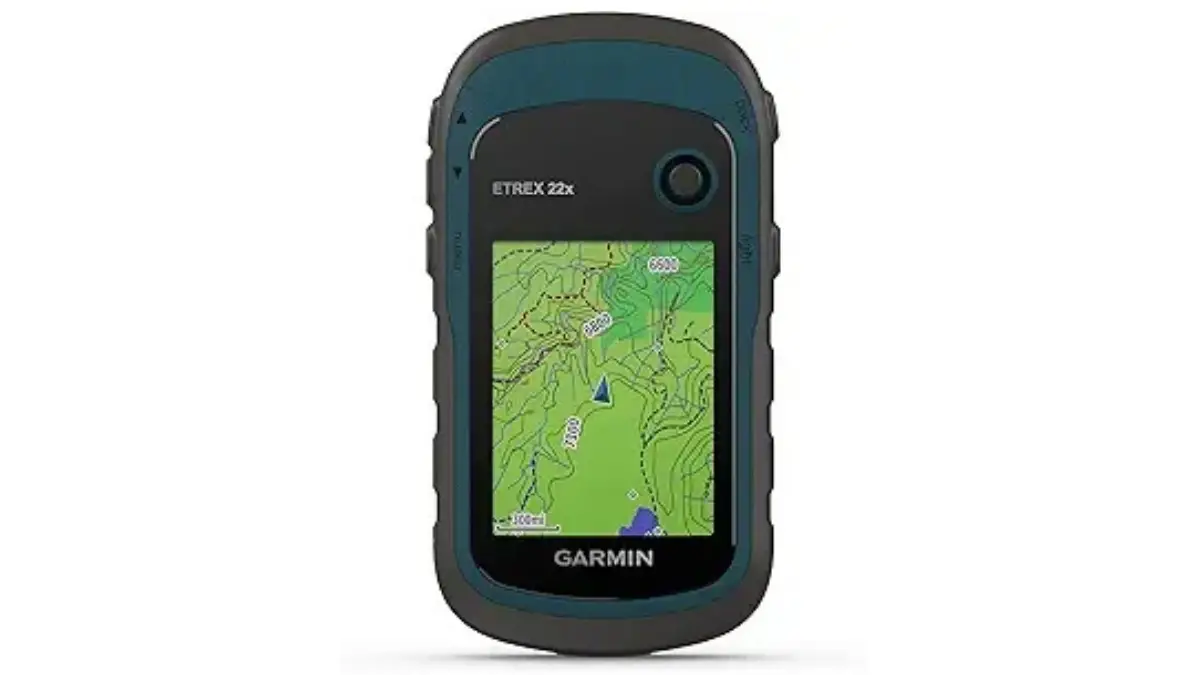
The Seductive Promise: A dedicated GPS unit is sold as a rugged, reliable, and essential piece of safety equipment for anyone heading into the backcountry. It promises perfect navigation where cell phones might fail.
The Harsh Reality: For most modern campers and hikers, a separate GPS device is a redundant and expensive piece of tech. Today’s smartphones have “incredibly powerful and capable GPS” chips that are often easier to use and have more features than dedicated units.
With powerful navigation apps like Gaia GPS or AllTrails, you can download detailed offline maps, track your routes, and access more data than most standalone GPS devices provide.
The Smarter Alternative: The best navigation system is a smartphone with a quality navigation app and a reliable portable power bank (see item #5). Before you leave home, download the maps for your area to make sure they work without cell service.
For real emergencies and peace of mind in remote areas, a personal locator beacon (PLB) or satellite messenger is a much better safety investment.
Also, every outdoor lover should learn the timeless and foolproof skills of navigating with a physical map and compass.
9. The Straw-Style Water Filter
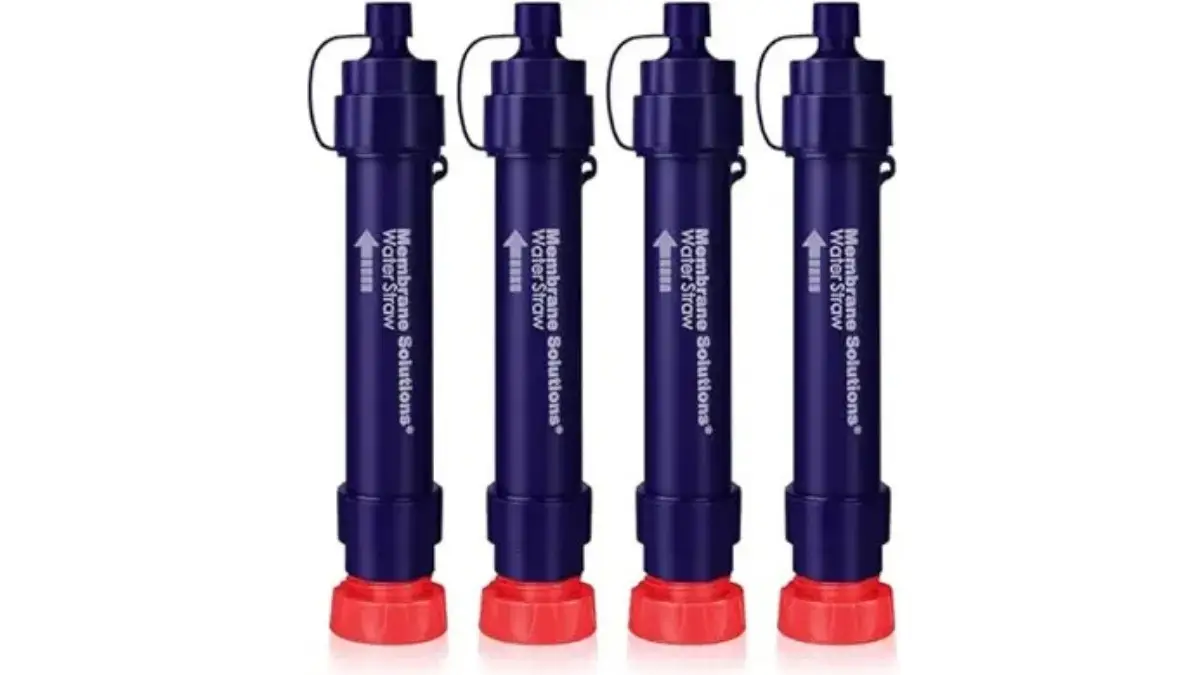
The Seductive Promise: Straw-style filters offer the appealing idea of instant, safe drinking water directly from any natural source. They seem like a lightweight, simple solution for hydration on the go.
The Harsh Reality: While these filters have a place in an emergency kit, they are very impractical for general camping. Most established campgrounds provide safe drinking water, making filtration unnecessary.
For car camping, it is much simpler to bring water from home in large containers. Straw filters are also not good for anything other than personal drinking; you can’t use them to filter water for cooking, cleaning, or filling other bottles, and they can be hard to draw water through.
The Smarter Alternative: For car camping, the best solution is to bring water from home in large, reusable jugs.
For backcountry camping where you need to filter water, a squeeze filter system (like the popular Sawyer Squeeze) or a gravity filter is much better. These systems let you efficiently filter larger amounts of water into bottles or reservoirs, meeting all your campsite water needs.
10. Specialized “Camp” Furniture
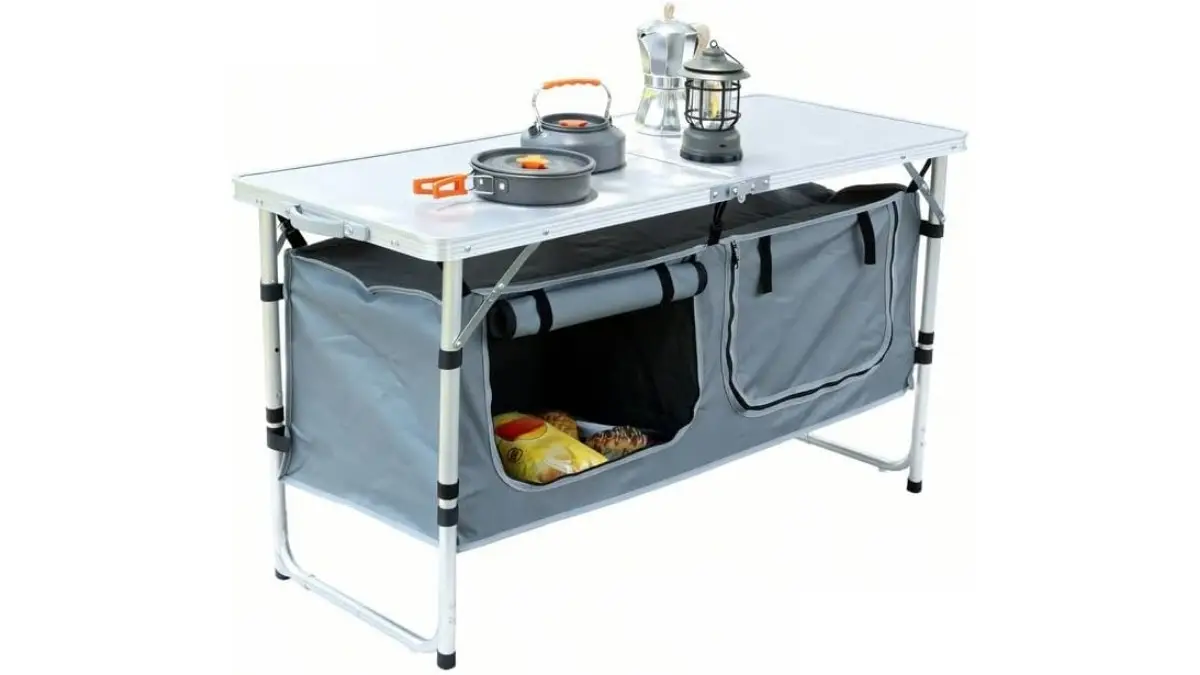
The Seductive Promise: A whole category of special furniture, from hanging cupboards to fancy camp kitchens, promises to bring the organization and comfort of home to the campsite, keeping your gear neat and off the ground.
The Harsh Reality: Much of this furniture is bulky, expensive, and adds a lot of time and effort to setting up and tearing down camp.
Items like hanging cupboards are often a “sub-par solution” to organization, as they are not usually animal-proof and can be hard to place effectively.
Similarly, bringing heavy, non-packable lawn chairs is a common mistake that leads to frustration when you have to haul gear from the car to the campsite.
The Smarter Alternative: Use the resources that are already there. At most campsites, the picnic table is your main kitchen counter and dining area.
The most secure, animal-proof storage container is your car. For non-perishables and gear, simple and cheap clear plastic bins offer great organization and protection from the weather.
Instead of bulky furniture, invest in one high-quality, lightweight, and packable camp chair for each person.
11. Expensive, Ultralight-Branded Gear (for Beginners)
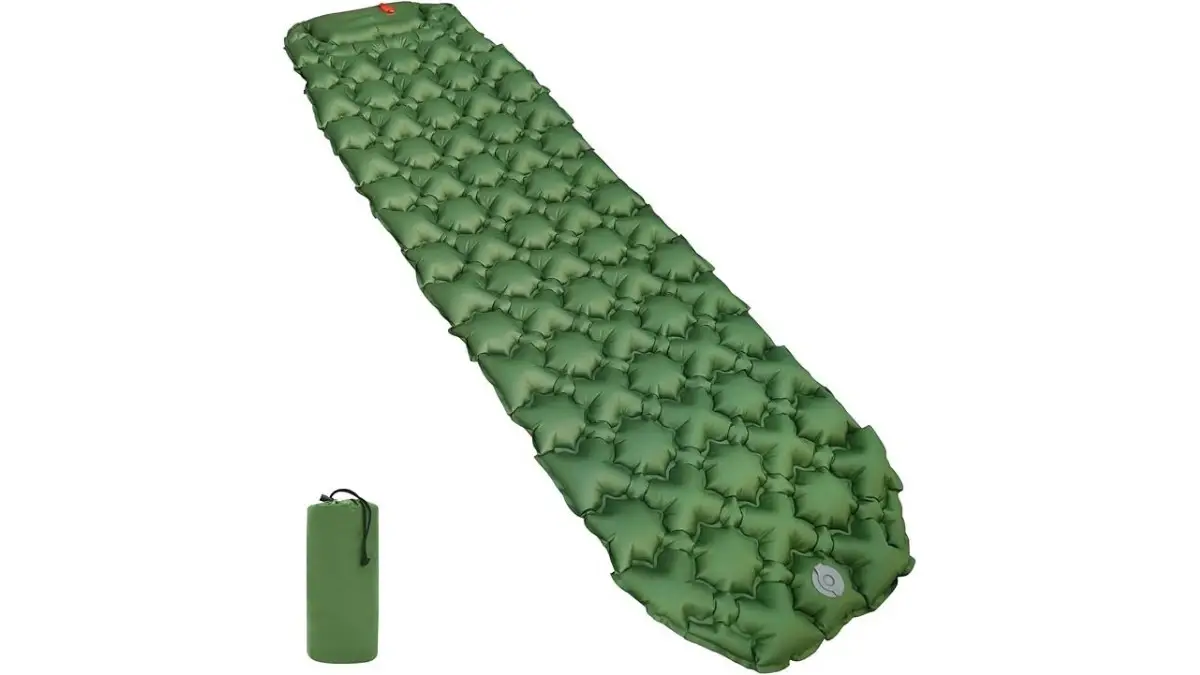
The Seductive Promise: The world of “ultralight” backpacking is attractive, promising that by spending more money on lighter gear, your outdoor experience will be more comfortable. The marketing suggests that cutting every possible gram is the key to success.
The Harsh Reality: For beginners, and especially for car campers, chasing the ultralight label is one of the biggest wastes of money.
The absolute lightest gear is often the most expensive and the least durable, using fragile materials like Dyneema that can get damaged easily and may not be right for new users.
A beginner will save far more weight, for free, by simply learning what not to pack, rather than by buying a super-expensive, featherlight version of an essential item.
The Smarter Alternative: Beginners should focus on getting a “relatively lightweight” but durable and affordable kit.
Focus on the “big three” (tent, sleeping bag, and backpack), but choose well-reviewed, mid-range models from good brands. The best way to a lighter pack is not through expensive purchases but through knowledge and discipline—by leaving the other 10 items on this list, and other unnecessary gear, at home.
The Gadget Swap-Out Matrix
| Useless Gadget | The Core Problem (Why It’s a Waste) | Smarter Alternative(s) | Estimated Cost Savings (2025) |
| 1. Complete Cook Set | Bulky, heavy, includes unnecessary single-use items. | Modular kit from home items + cast iron pan. | $50 – $150 |
| 2. Camping Pillow | Uncomfortable, prone to leaks, single-purpose. | Stuff sack filled with soft clothing. | $20 – $50 |
| 3. Oversized Survival Knife | Dangerous overkill, impractical for common tasks. | Multi-tool + small fixed-blade knife. | $40 – $200+ |
| 4. Backpack Rain Cover | Ineffective; leaks through the back panel. | Internal waterproof pack liner (trash bag). | $20 – $60 |
| 5. Small Solar Charger | Inefficient, unreliable, weather-dependent. | High-capacity portable power bank. | $30 – $100 |
| 6. Camp Blender/Toaster | Gimmicky, single-use, hard to clean. | Simplify meals; use a fire grate. | $20 – $115 |
| 7. “Mystical Fire” Packets | Chemical waste, prevents cooking over fire. | Enjoy a natural fire; use dim lanterns. | $5 – $20 |
| 8. Dedicated GPS Unit | Redundant with modern smartphones. | Smartphone with offline maps + power bank. | $150 – $400 |
| 9. Straw Water Filter | Impractical for general use; slow. | Bring water jugs; use a squeeze/gravity filter. | $20 – $40 |
| 10. Specialized Furniture | Cumbersome, expensive, adds setup time. | Use picnic table; store gear in car/bins. | $70 – $150 |
| 11. Beginner Ultralight Gear | Extremely expensive for marginal gains; often less durable. | Focus on packing less; buy durable mid-range gear. | $200 – $1000+ |

